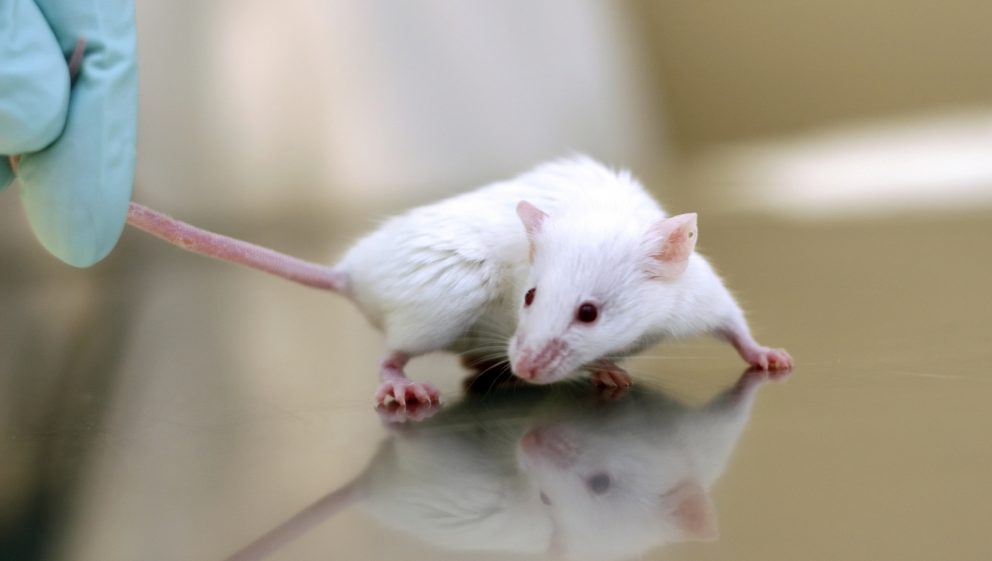Ban on the use of lead shot – finally!
Posted 10 Jul 2025

Posted on the 22nd October 2015
The massive overbreeding of genetically modified (GM) animals is revealed today in Home Office statistics, relating to all vivisection completed in 2014. A total of 1.94 million animals, mostly mice, incinerated – many of them soon after birth – having been assessed by the establishments concerned as being of no use.

The Home Office has long claimed that the breeding of these animals is essentially a benign process. In reality, it generally involves painful surgery, castration and the use of powerful hormones.
The approximately 620,000 GM animals used in actual experiments suffer a range of authorised abuses. Last month, Animal Aid exposed an Alzheimer’s Society-funded experiment that involved daily drug injections and forcing mice to swim searching for an escape route.
The true extent to which animals in laboratories suffer is hotly contested. Experiments are classified into three main categories*: mild, moderate and severe. The Home Office has long contended that only two per cent of the experiments it licenses fall into the most severe class. The newly released data, however, which is based on researchers’ feedback at the end of their experiments, shows that eight per cent of all procedures fall into the most severe grouping. The true figure is likely to be much higher, given the proven reluctance of many researchers to acknowledge the extent to which animals under their control are harmed.
A recent official report, examining what monkeys used for neurological research endure inside laboratories, found that some researchers fail to recognise the devastating suffering caused by their activities. In one extreme case, a monkey who had been subjected to major surgery for an invasive head implant, followed by 10 further craniotomies (surgery which involves opening up the skull), was described as having undergone ‘mild to moderate’ procedures.
Furthermore, in meetings with senior Home Office officials, it has been made clear to Animal Aid that the official view of mice is that they are less capable of experiencing distress, pain and suffering than larger animals.
Once again, universities were the dominant user of animals, accounting for 49 per cent of all procedures. They specialise mostly in disease research, much of which is speculative and unfocussed. Commercial companies, by contrast, are concerned with the bottom-line. As a consequence, industry has invested more in non-animal methods to assess the usefulness and toxicity of compounds.
The new Home Office figures reveal the traditional ups and downs relating to the numbers of different species used. One development that is likely to disturb the public, is a marked increase in the number of procedures using cynomolgus monkeys – up 315 on last year. Most will have been used for invasive toxicity or safety testing.
A newly conspicuous category of research is “Techniques of Interest”. This reveals that animals, in 2014, are still being used to test the effects of alcohol and even the safety of household products.
Says Jessamy Korotoga of Animal Aid:
‘The annual release of the statistics, which on the surface are row upon row of numbers, fails to portray the reality. The document itself has no pictures of animals showing how they live and die in laboratories; it is a dry and sterile account. But behind each category and each number are the lives of sentient animals. They would have lived, in the most alien and stressful of environments, a life that may have been hours, days, months or even years long. However long the life, it would have been one filled with suffering, which would invariably end with the animal’s death.
‘Added to this tragedy is the fact that animal research does not work. Animals are not miniature humans, they are different to us on so many levels, and these differences are at the root of the failure of vivisection to provide answers to urgent questions about human health’.
*The other categories are non-recovery and sub-threshold.
Order an End Animal Experiments action packPosted 10 Jul 2025

Temperatures are rising and it’s time to get outdoors, enjoy the weather and tuck into some delicious vegan food! Thanks to an abundance of plant-based options now available, there’s an alfresco option for every tastebud...
Posted 09 Jul 2025
